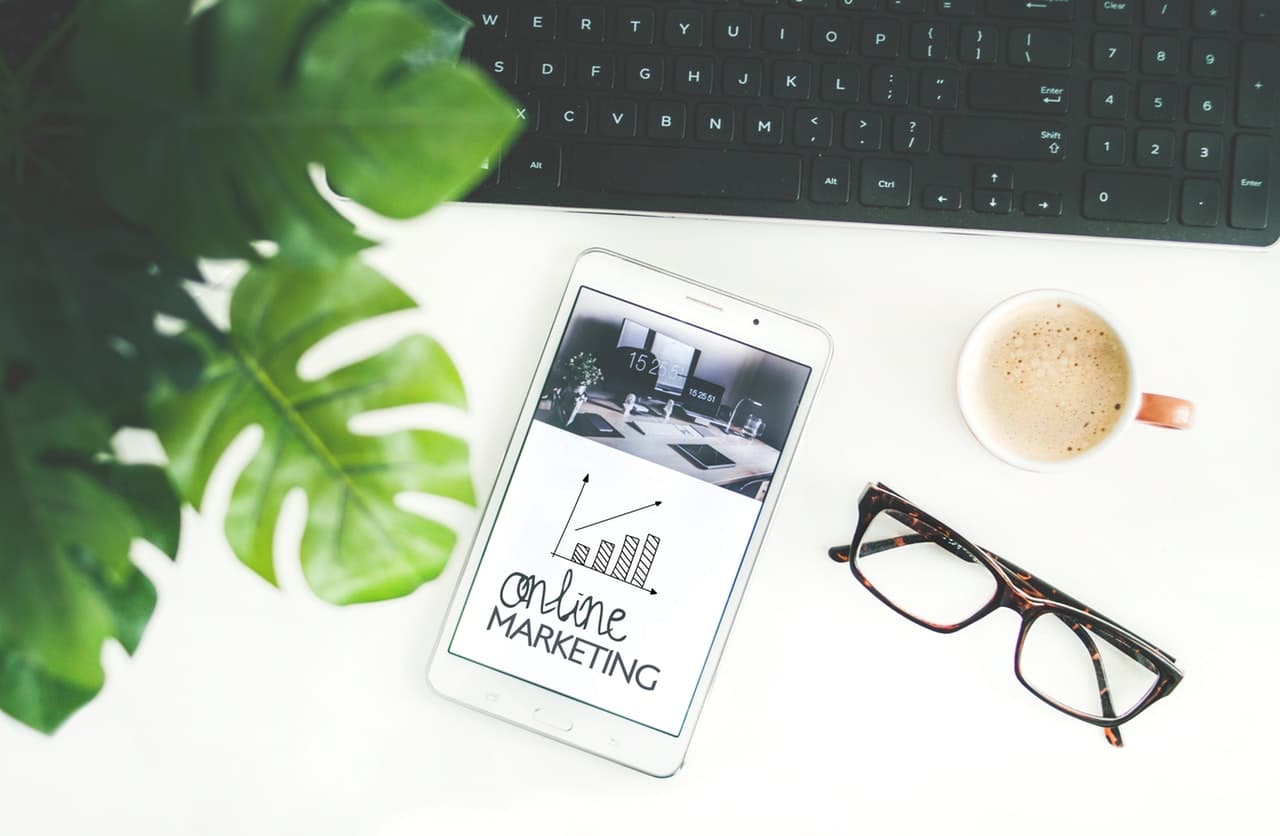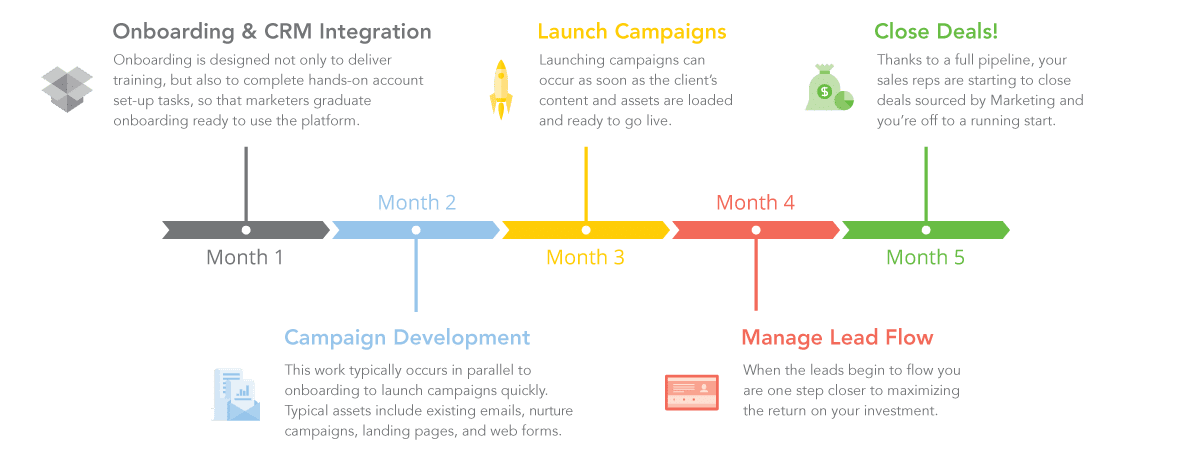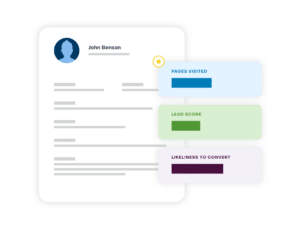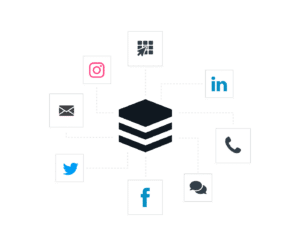Is Your B2B Lead Generation Firing on All Cylinders?
Regardless of the industry, or the size of the business, marketers are all in pursuit of the same goal: B2B Lead generation. It’s a simple word for an increasingly complicated issue. In a marketplace where competition is intense and the pace accelerated, marketing teams need to be competitive on a growing range of channels and in the management and production of increasing quantities of data and content.
Only a strong marketing automation suite with up-to-date features can ensure that a team’s lead generation strategy keeps pace in this environment. To make sure that your lead generation engine is firing on all cylinders, it’s important to commit to implementing a platform, integrating it within your culture and current technology, and set firm timelines to have the marketing automation platform fully functional.
The process really begins, though, with choosing the right lead generation software for tackling the rapid change and disruption of the present day.
Lead Generation and the High-Definition Customer Experience (HD-CX)
SugarCRM embarked on a key innovation in marketing automation by first implementing the time-aware CX platform. Time-aware CX was about bringing a customer’s full interaction history and a complete image of their position in the customer journey to the user’s fingertips. By documenting interactions within the full context of what has happened to date and processing that information through predictive analytics, time-aware CX has helped businesses make truly informed decisions. In turn, this has eased a whole range of processes including—most importantly—lead generation and conversion.
That key innovation now finds its fullest expression in the high-definition customer experience, HD-CX is the new marketing standard. HD-CX provides a 360-degree view of customer interactions and making it easier than ever to chart the right path forward. By integrating data with time awareness technology that provides insights about the past and present, HD-CX is able to yield more reliable visibility about the future than ever before.
Leveraging the power of HD-CX is the first and most crucial step in making sure that your business has the most powerful possible approach to lead generation. Once you’re aware of that crucial innovation and possess a complete customer picture, you can leverage it to your advantage in today’s business landscape.
The Art of Implementation: 5 Steps to Enjoying Better Lead Generation with Marketing Automation Software

1. Have a Clear and Practical Content Strategy
No matter what vendor you ultimately choose for your marketing automation, you can expect that they’ll provide a wide variety of tools that can be combined into a customized suite that meets your needs. This is what Sugar does. In order to choose the specific tools that will be best for your needs, you have to have a clear picture of what those needs are.
That means:
- Having clear goals and objectives for your company in the medium, short and long term
- Having a content strategy that addresses those goals and objectives
- Making sure stakeholders throughout the company—not just in marketing—understand their roles in implementing that strategy
Even the best automation software is only as good as the strategy and thoughtfulness that goes into building and using these powerful solutions. Position yourself for success by working out your needs first and seeking out the software that can address those needs.
2. Choose Your Automation Platform
While it’s important to plan, don’t let perpetual planning paralyze you. Technology and the marketplace are always in motion. In order to get the most out of any potential lead generation software, you need to be prepared to generate a content strategy efficiently. Once this is done, pull the trigger decisively on a solution that provides the functionality you need.
When you’ve arrived at this step, it’s time to consider:
- Your program requirements and how well potential platforms meet each requirement
- Your time and budget resources and how well prospective vendors can align with them
- The costs and system availability of any potential platform (keeping a particular eye out for hidden fees)
- What kinds of pre-built third-party integrations a platform offers that can leverage assets present in your tech stack
- Consistency and efficacy of customer support
- Well-informed third-party reviews and evaluations of prospective vendor companies and their solutions
Taken together, these are the considerations that should give you the clearest picture of which marketing automation software is the best fit for your business.
3. Understand the Implementation Process, and Prep Your Team
Vendors will often have a dedicated implementation team whose job it is to guide you through the process. Get in touch with them as soon as you’ve decided on a lead generation software package and get their help in understanding exactly what to expect. There are generally four key stages in getting an automated marketing system up and running:
- Platform setup: Getting data into the system, managing any necessary integration, and setting up the platform to be easy to use and to extract information from.
- Onboarding: Training your core users on how to use the platform, leverage functions like reusable templates, and extract key reports and analytics quickly and efficiently.
- Campaign Setup: Addressing any key campaign assets that need to be migrated to the new platform, such as emails, landing pages, forms, blogs, and nurture campaigns, and develop new campaigns where needed.
Besides looking at these steps of implementation and working with the vendor’s in-house services, it’s also important to touch base with customer references. They can provide a heads-up about any common pitfalls during the process, specifics about what your team might need to provide, and what you can expect the package to look like when implementation is finished. The more prepared you are, the stronger the start out of the gate will be.
4. Set Out and Execute an Implementation Timeline
Once you have a handle on what the implementation process will look like, you can work with your provider to set out a go-live timeline that identifies key milestones. Identify potential snares, such as points during the schedule where key stakeholders might be on vacation. Specifics of timelines will always vary, especially depending on the size of your business, but a mid-sized firm implementing new marketing automation software can generally expect:
- 4-6 weeks to develop a content marketing strategy
- 6-8 weeks for setup and onboarding
- 6 weeks to migrate assets from any legacy platforms and/or to build to fresh campaign assets
- 6 weeks to launch and run initial campaigns
Avoid the temptation to rush any of these steps. Time spent on carrying them out properly the first time around will mean considerable time and money saved during actual operations. This means you can expect the full process from conception of content strategy to the implementation and running of automated lead generation software to take upwards of six months.
5. Launch Your First Campaigns
By providing yourself a long runway to final implementation, the lead flow from your campaigns will benefit from a well-built content marketing strategy, high-quality content, and a company culture from the moment you’re up and running. Launching your first campaign becomes a process of tweaking campaigns, refining audience segmentation, and analyzing the best-performing channels. The overall result should be an increased flow of high-quality leads.
Are You Ready to Generate More Leads?
Lead generation tactics and strategy are the difference between success and failure for businesses in the age of digital transformation. As you plan your campaigns, factor in the role a marketing automation platform can play in maximizing your company’s ROI and keeping you competitive. Contact Sugar today to request a demo, and learn more about how a combination of good planning and cutting-edge technology can make your business a success story.




